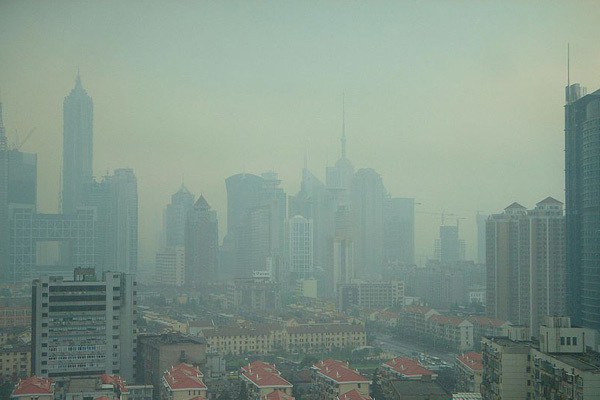Greenpeace sharply criticized China for unveiling ambitious plans to construct 50 coal gasification plants. The gasification plants will reduce air pollution relative to conventional coal power plants, but Greenpeace claims the total of 1.1 billion tons of carbon dioxide emissions from the gasification plants is unacceptable.
Addressing Air Pollution
China’s major cities, most notably Beijing and Shanghai, have notoriously poor air quality. Last September the government announced plans to build cleaner coal gasification (coal-to-gas) facilities. As currently envisioned, the bulk of the plants will be located in the less-densely-populated northwest of the country, including Xinjiang, western Inner Mongolia, Ningxia, and Gansu.
China’s state-owned power companies classify coal gasification plants as “clean energy” or “new energy,” and Chinese officials tout the plan as a sign Beijing is serious about reducing air pollution in urban areas.
Climate Trumps Clean Air?
But Li Shuo, a climate analyst with Greenpeace East Asia, asserted the plan will do more harm than good.
“China risks a boom in a destructive, expensive, and outdated technology, which could undermine its efforts on climate change and further damage its environment,” the July 24 New York Times quoted Shuo as saying.
Water Concerns
Coal gasification is a water-intensive means of producing electricity, and there are concerns the arid and semi-arid regions of western and northwestern China where the plants are to be located may not have enough water to make the facilities function properly.
“Around 80 percent of the predicted output of SNG (synthetic natural gas) of the 50 plants will come from areas of high or extremely high water risk—areas of high demand or low supply,” Greenpeace argues on its website.
The scarcity of water has also slowed down China’s development of vast hydrocarbon reserves in shale formations in western China. Water is a key component in the process of hydraulic fracturing (fracking) used in extracting oil and natural gas from shale formations.
More Coal Use
Greenpeace claims carbon dioxide concerns should rule out pollution-reducing SNG power plants. Greenpeace cites a 2013 study in Nature Climate Change in which researchers from Duke University report greenhouse gas emissions from SNG are 36 to 82 percent higher than conventional coal power. Furthermore, Greenpeace says coal-to-gas uses more coal than traditional coal-fired plants. Greenpeace concludes replacing coal with coal-to-gas will lead to even higher carbon dioxide emissions. Researchers at China’s Tsinghua University agreed, concluding the Chines government’s plan will increase coal use in China.
Coal accounts for 70 percent of all energy used in China and 80 percent of all Chinese electricity generation. According to the Climate Central website, “In just 5 years, from 2005 through 2009, China added the equivalent of the entire U.S. fleet of coal-fired power plants, or 510 new 600-megawatt coal plants.” Additionally, the U.S. Energy Information Administration (EIA) estimates China will add the equivalent of a new 600-megawatt coal power plant every 10 days for the next 10 years.
“Greenpeace claims to care about air pollution, but when China advances a cost-effective plan to deal with the problem, all Greenpeace talks about is carbon-dioxide emissions, not the cleaner air that will result from China’s plan,” said Dan Simmons, director of state policy at the Institute for Energy Research.
“Greenpeace has such tunnel vision on carbon dioxide that it completely misses the point of a plan that will lead to a cleaner environment,” Simmons explained. “It makes you wonder how much they care about air pollution and how much they just care about reducing energy options.”
Global Warming Fears Misguided
“Greenpeace is motivated by global warming fears when it criticizes Chinese coal use. However, the pace of global warming has been quite modest and is not a serious problem,” said Jay Lehr, science director for the Heartland Institute, which publishes Environment & Climate News. “Even if it were a problem, China’s enormous carbon dioxide emissions ensure any self-imposed carbon dioxide restrictions in the United States are not only costly, but environmentally pointless.”
“The real environmental concern about China’s coal use is the failure of Chinese coal plants to install basic pollution control equipment that is required in the United States and has assisted the dramatic reduction in U.S. air pollution during recent decades,” said Lehr.
Bonner R. Cohen, Ph. D., ([email protected]) is a senior fellow at the National Center for Public Policy Research.





